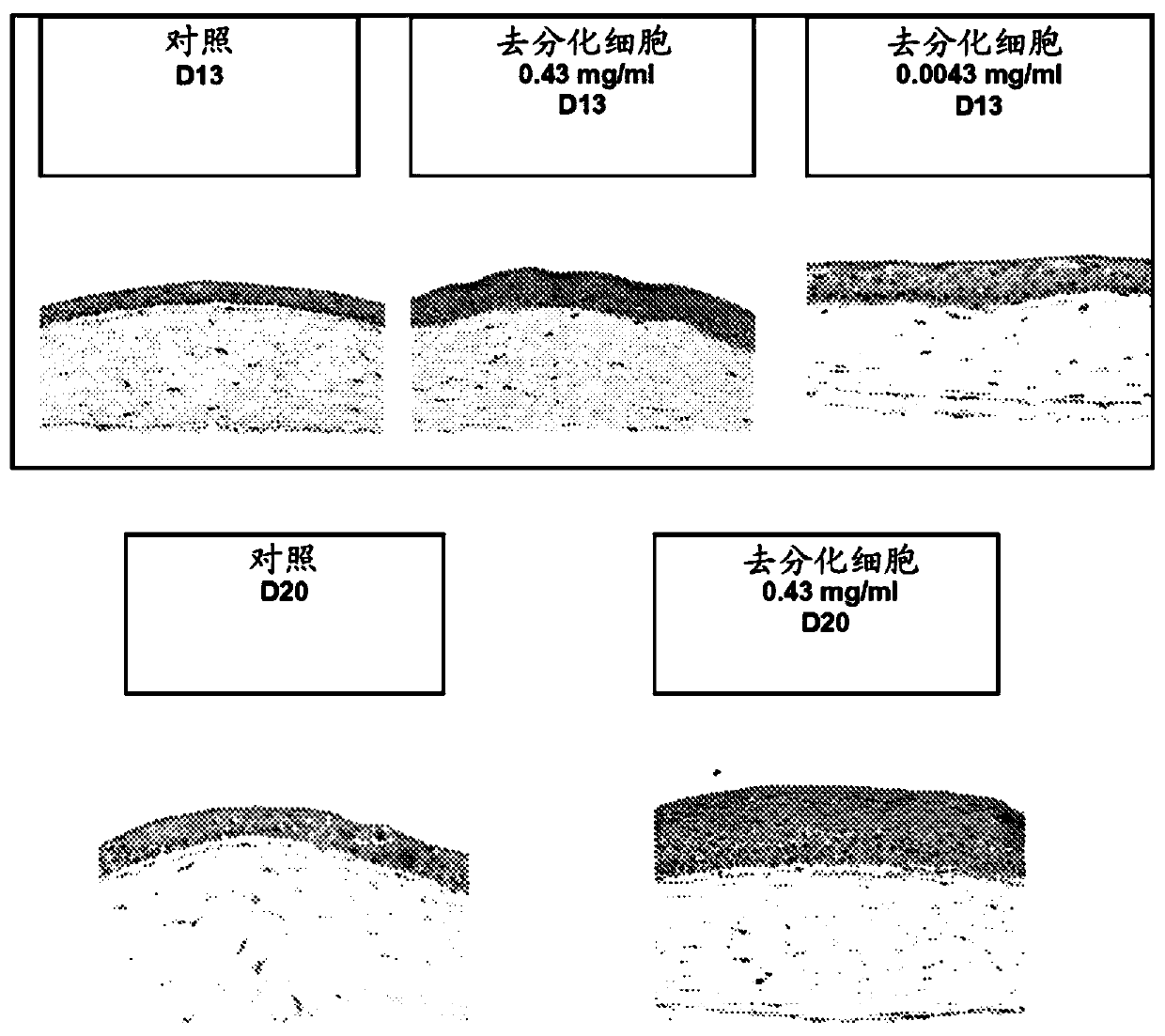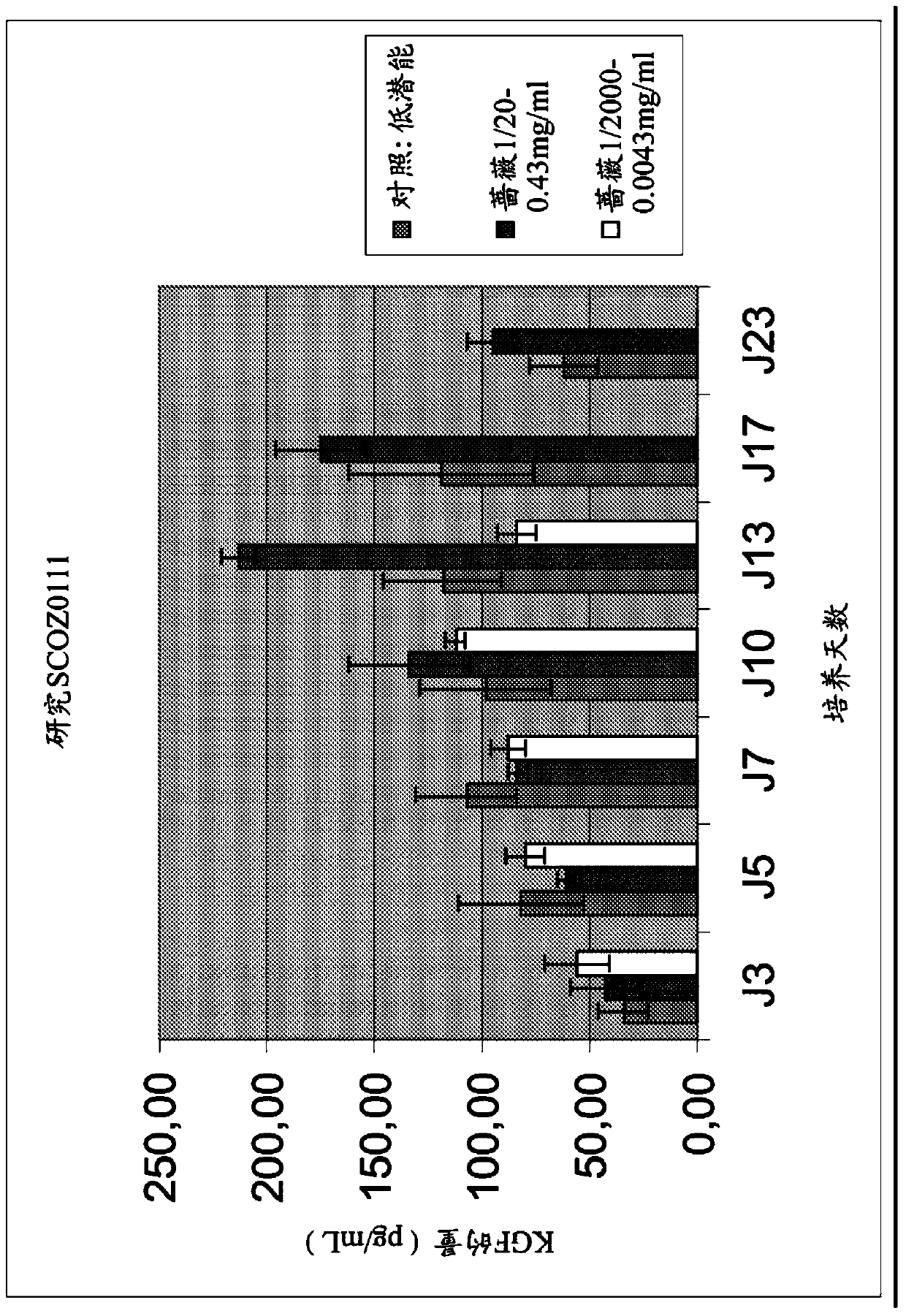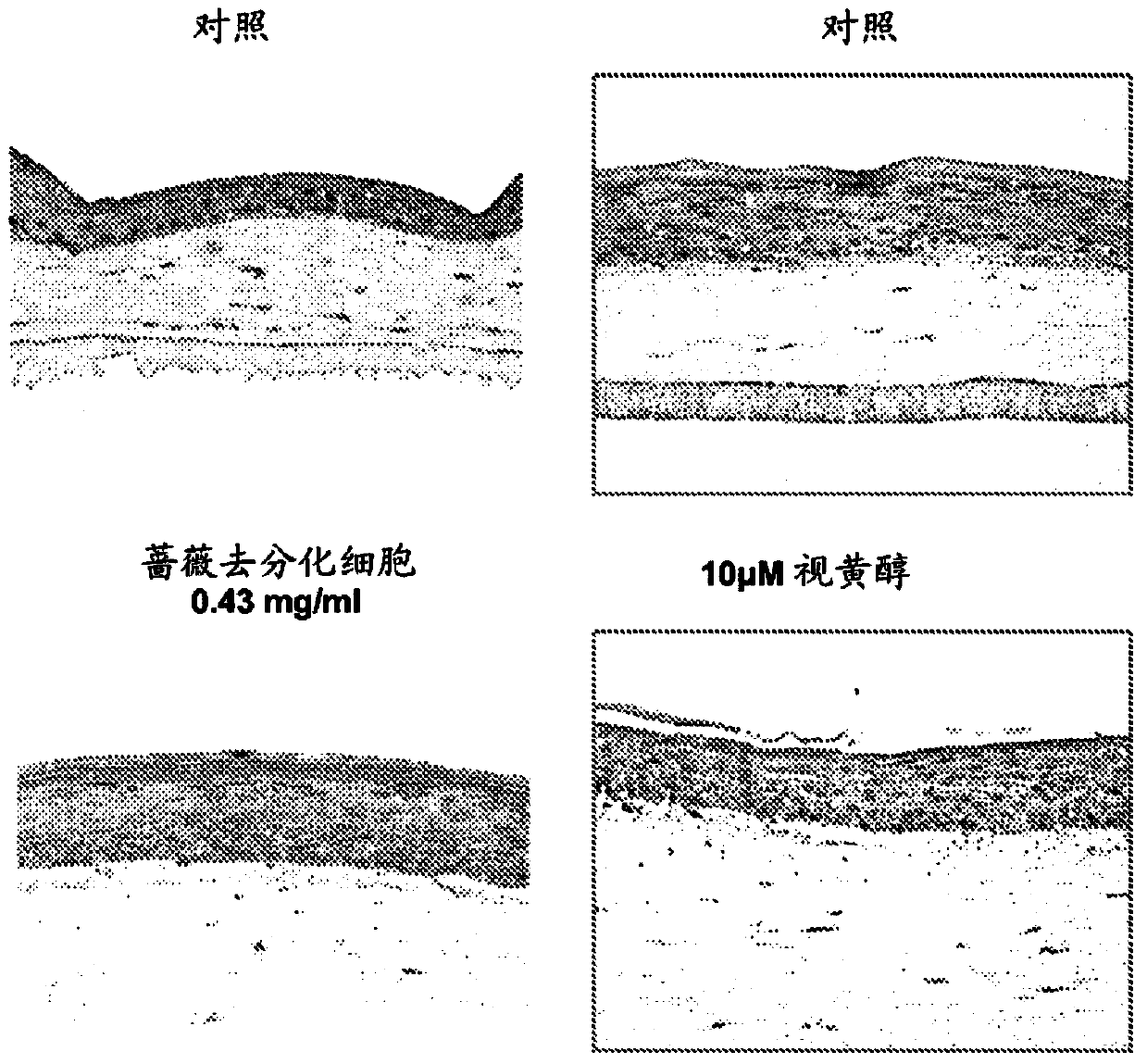Cosmetic uses of dedifferentiated plant cells
A plant cell, dedifferentiation technology, applied in the field of beauty, can solve problems such as functional changes, and achieve the effect of improving expression
- Summary
- Abstract
- Description
- Claims
- Application Information
AI Technical Summary
Problems solved by technology
Method used
Image
Examples
Embodiment 1
[0195] Dedifferentiation of Plant Cells Using Plant Tissue Culture Rosebush (Rosa lancomee)
[0196] The blades of rosebush (Lancome rose) are purified by conventional technical means of those skilled in the art, and then placed on the following medium:
[0197] macronutrients
mg / l
NH 4 NO 3
1650
KNO 3
1900
CaCl 2 2H 2 O(CX41)
440
MgSO 4
180.8
K H 2 PO 4
170
micronutrients
mg / l
MnSO 4 4H 2 o
22.3
ZnSO 4 ·7H 2 o
8.6
KI
0.83
Na 2 MoO 4 2H 2 o
0.25
CuSO 4 ·5H 2 o
0.025
Na 2 EDTA·2H 2 o
37.3
FeSO 4 ·7H 2 o
27.8
vitamins
mg / l
100
0.5
Pyridoxine hydrochloride (B 6 )
0.5
Thiamine hydrochloride (B 1 )
0.1
mg / l
Naphthaleneacetic acid
10
0.06
mg / l
...
Embodiment 2
[0205] Demonstrating the "pro-regenerative" effect of dedifferentiated plant cells of Lancome rosebush in a model of reconstructed skin with low regenerative potential
[0206] a - Preparation of a model of reconstructed skin with low regenerative potential
[0207] Isolation of keratinocytes from human skin samples.
[0208] After removing the subcutaneous tissue with a scalpel, the skin samples were cut into pieces and then decontaminated by antibacterial-antifungal treatment in DMEM medium (Life Technologies, Scotland).
[0209] In order to separate the dermis from the epidermis, the samples were then subjected to proteolytic treatment (Dispase II) / Trypsin 0.25%) overnight at 4°C. Epidermal fragments, separated from dermal tissue, were placed in 1x trypsin-EDTA solution at 37°C for 20 minutes. The effect of trypsin was neutralized by adding medium containing 10% fetal calf serum (FCS). The cell suspension was homogenized and then washed with keratinocyte growth medium ...
Embodiment 3
[0223] Titration of Keratinocyte Growth Factor (KGF) Secretion Induced by Treatment of Rosebush Dedifferentiated Plant Cells in a Model of Reconstructed Skin with Low Regenerative Potential
[0224] Culture media for this experiment described in Example 2 were harvested on days 3, 5, 7, 11, 13, 17 and 20. The soluble amount of KFG secreted by the reconstituted skin and present in these media was analyzed by ELISA (Enzyme-Linked Immunosorbent Assay) (R&D Systems, catalog N° DKG00).
[0225] Such as figure 2 As shown, an increase in KGF secretion was observed, especially at day 13 after treatment with rose dedifferentiated cells (0.43 mg / ml) compared to the control (untreated).
[0226] The growth factor is produced by fibroblasts and is well known for its mitogenic effect on keratinocytes (Finch et al., Science 1989, 245:752; Marchese et al. / J Cell Physiol 1990, 144:326). This result shows that rose (Rosa lancomee) dedifferentiated plant cells induce the secretion of diffusi...
PUM
 Login to View More
Login to View More Abstract
Description
Claims
Application Information
 Login to View More
Login to View More - R&D
- Intellectual Property
- Life Sciences
- Materials
- Tech Scout
- Unparalleled Data Quality
- Higher Quality Content
- 60% Fewer Hallucinations
Browse by: Latest US Patents, China's latest patents, Technical Efficacy Thesaurus, Application Domain, Technology Topic, Popular Technical Reports.
© 2025 PatSnap. All rights reserved.Legal|Privacy policy|Modern Slavery Act Transparency Statement|Sitemap|About US| Contact US: help@patsnap.com



